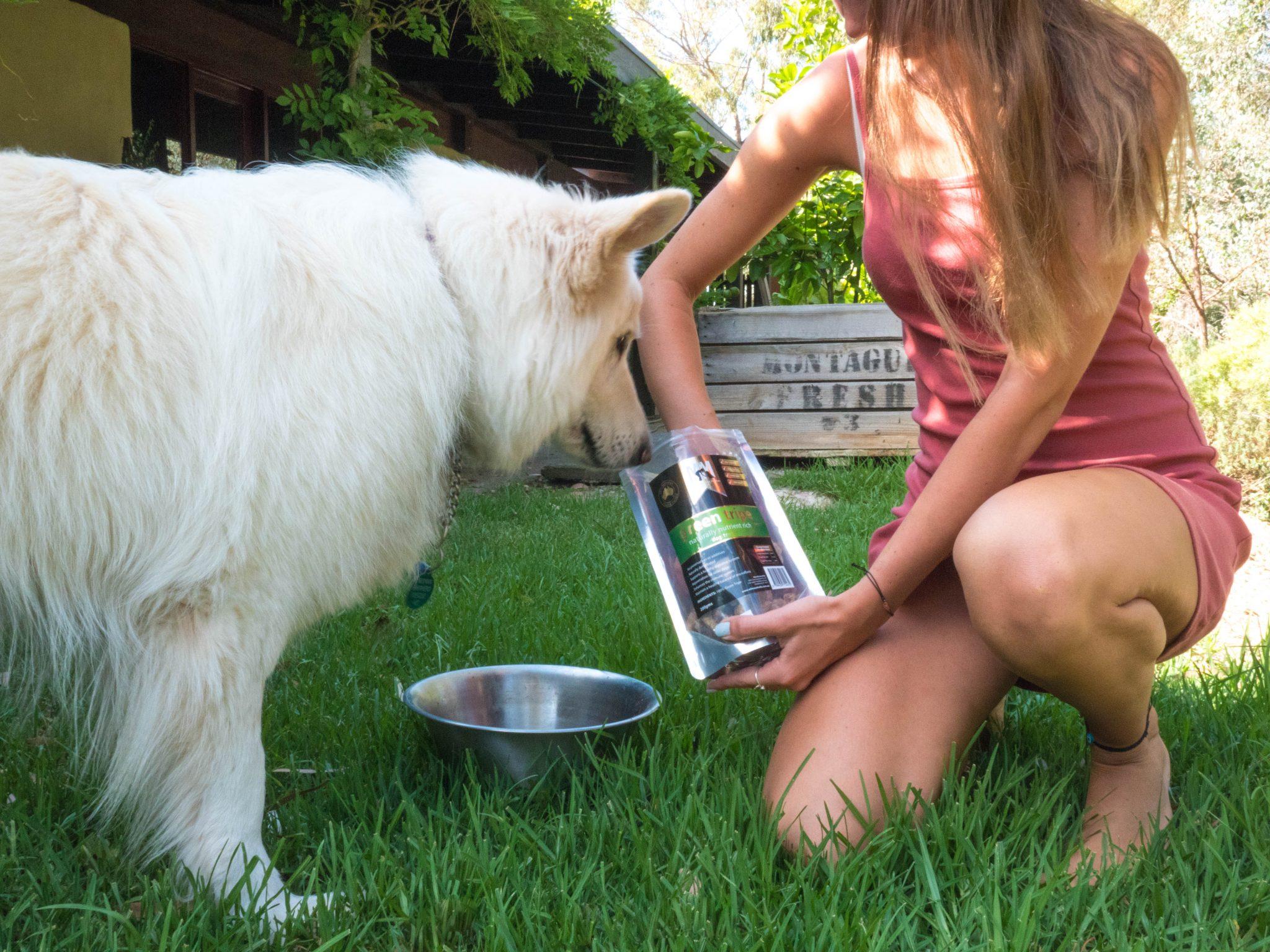

Date: 15-12-2021

If your pooch has a tendency to scoff down food any chance they get, sticking to a strict feeding routine will keep them disciplined and in healthy condition. When dogs have free reign to eat whatever they want, whenever they want, overindulging can lead to weight gain, joint issues and other major health concerns. To ensure your furry friend has a long, happy and healthy life, we’ve put together a dog feeding guide, so you’ll know how often you should feed your dog, and how much food to feed your dog.
While dog food packages have recommended serving sizes for your pooch, several factors can influence how much food they need to live a healthy and active life. We know that every dog and breed is so unique, so it’s important to understand this when deciding how much and how often to feed your four-legged friend. Here are other factors to consider:
Weight — Maintaining an ideal body weight is extremely important for your dog’s overall health and happiness. When they’re being underfed, it can impact their body condition and cause unwanted health concerns. If you’re unsure how much to feed a dog in kgs, your local vet should be able to guide you in the right direction. Your vet will also be able to tell you how much to feed a puppy by weight in kgs, so you can plan meal times and a feeding routine accordingly.
Breed — Whether you have a bulldog, a border collie, or a golden retriever, different breeds have different nutritional needs. An active breed will use more energy, meaning they need a higher calorie intake. Your pooch’s nutritional requirements will be directly related to the type of lifestyle they live and their.
Size — Along with your furry friend’s breed, their size may impact how much food to feed your dog. Small-sized dogs may actually require more calories per kilogram than larger dogs due to their higher metabolic rates.
Activity levels — The feeding recommendations provided on the back of dog food packages are always based on average adult dogs with normal activity levels. If your pooch gets a lot of daily exercise with you — whether it be walking, jogging or sprinting — they may need more calories to meet their needs. If your dog lives a relatively inactive lifestyle, you may need to cut back on their calorie intake to avoid weight gain or potential health problems.
If you’re unsure whether you’re on the right track with your food schedule, your local vet should be able to provide you with a helpful dog feeding guide.
Food allergies — It’s important to monitor how a particular food affects your dog. Mild allergic reactions can cause discomfort, but severe cases can cause your dog agony. Dogs with food allergies will present symptoms like itchy and irritated skin, obsessive chewing, biting their paws, ear infections or skin infections. In some severe cases, dogs may also experience vomiting, an itchy bottom, diarrhoea and excessive gas. Regardless of the breed, or whether they are male or female, dogs can suffer from food allergies when they are pups, or they can unexpectedly develop symptoms well into their golden years.
If you fear your dog may be allergic to the kibble you’re giving them, it’s best to contact your vet for the next best steps. But if your pup’s energy levels are high, their skin is healthy, their coat is shiny, and their stool is firm, this means you’re feeding them correctly.
If you feed your pup too little, they can suffer from nutritional deficiencies. However, if you overfeed your furry friend, it can result in serious health issues such as:
Generally speaking, it’s recommended that you feed an adult dog twice a day — once in the morning and again in the evening. If your pooch has a tendency to scoff down their meals quickly, you can divide their daily food into three or four smaller meals so their tummy can settle.
If you have a new puppy, their stomachs are just becoming accustomed to new foods, so be careful not to overfeed them or give them too many treats. Keeping them on a regular diet that they are accustomed to will reduce their chances of stomach upsets or diarrhoea.
Of course, your puppy’s weight will determine how much to feed a dog in kgs. If you have a small breed that is weaning, feed them three to five times a day. After 16 weeks and up to adult age, it’s recommended to feed them two to three times a day.
When the time comes, and you’re ready to change your puppy food, it’s best to do this over two weeks. Puppies have extremely sensitive stomachs, so slowly and carefully introducing new foods over an extended period of time will prevent them from experiencing stomach cramps and runny stools. To transition your pooch to different food, introduce them to their new kibble by mixing it into the existing meals. For a guided reference, you can follow this schedule:
It goes without saying that if your puppy experiences any minor digestive issues — runny stools, vomiting or stomach aches — the transition should immediately be paused until things have settled.
Here at MfM Australia, we sell super premium dog food that’s suitable for all breeds and sizes. Packed with all the nutritious goodness your pup needs to live an energetic and active lifestyle, our vitamin, mineral and probiotic-rich food is gentle for dogs with allergies, digestion issues, shedding, hotspots, joint inflammation, anxiety and body odour. We stock gluten-free kibble, grain-free kibble and meat-based kibble that your furry friend will no doubt enjoy! Shop our range online today to deliver your four-legged friend with the highest-quality food on the market.